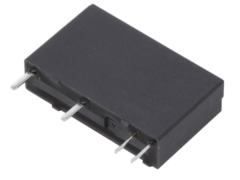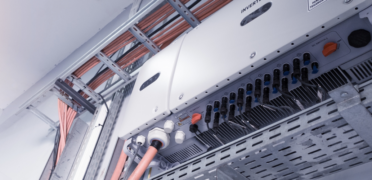If you were to tell me last year that in the first few months of 2020 there would be roaring Australian bushfires, climate emergencies, US trade tariff wars and a deadly virus spreading across the globe – I wouldn’t have believed you.
It was January 30th, 2020 when the International Health Regulations Emergency Committee of the World Health Organization declared the outbreak a “public health emergency”. The virus first broke out in Wuhan late December 2019 which spread like wildfire. All global catastrophes come a silver lining – even though it is difficult to see sometimes. It is easy to become complacent in the world we live in. It’s only when something like this happens that we realise what we had and how it will affect us in the long run. Within this article, I am going to (try) and enlighten the situation we are in with the benefits that COVID-19 may have on the electronics industry and ourselves. Within this article I will explain how COVID-19 had effected the industry and how you can prevent the virus affecting you.
Impact So Far:
The most significant impacts that the electronics industry has seen from COVID19 would be disruptions to supply chains, decline in sales and many employees having to work at home. Not only this, impacts such as the companies that have unfortunately not survived the financial impact of the pandemic and those that are pausing all spending.
Increased Demand for Ventilators
In my opinion, there will have been an increase in job opportunities for contract manufactures due to the circumstances of needing box build medical assists. The demand for ventilators has rocketed due to them being a vital asset for tackling the coronavirus. Accoridng to NS Medical Devices, General Motors, Tesla and Ford have all pledged their support to offer resources in the US, where regulations have been relaxed by the Food and Drug Administration (FDA) to plug the shortage of an estimated 75,000 devices. Ford is using parts usually installed in vehicles, such as fans and batteries, to produce modified respirators and ventilators – working alongside health industry manufacturers GE Healthcare and 3M. The automotive giant also wants to make 75,000 transparent face shields used in hospitals. For many patients critically ill with COVID-19 – a ventilator could be a matter of life or death. The structure of the machine is to get oxygen to the lungs while removing carbon dioxide. This is essential for patients who are too sick to breathe on their own. “The fact the government is asking manufacturers to make a different product to what they normally make is unprecedented since the World War Two,” Justin Benson, from the consultancy KMPG, said. “It’s a relatively complex piece of equipment with lots of components and a dedicated supply chain. So, asking someone who makes a car to produce a respirator would take them some time.”
Medical: Sensor Market Taking Off
With COVID19 circulating the globe, the demand for medical applications has really taken off. Stated by Market Watch, medical Sensors refers to sensors in medical environments that detect chemical, physical, and biological signals. There are several applications of medical sensors in medicine such as for monitoring, imaging devices, fitness and wellness, diagnostics, and therapeutics which make medical devices more effective and safer, while simplifying their operation. Successful applications of sensors in medical technology include vacuum suction pumps, blood sugar measuring devices, dialysis machines and sleep diagnostic devices. According to Intrado Global Newswire, the global medical supplies market size is projected to reach USD 100 billion by 2021 from USD 78 Billion in 2019, at a CAGR of ~13.4% which is primarily from the increasing demand for medical applications during the virus outbreak in late 2019.
Medical devices are a growing trend within the fitness and health industry. The successful development of wearable technology is from the increasing demand of customers taking charge of their own health and purchasing the sensor-based devices. Stated from Pharmiweb, in 2018, according to Tax Policy Center, the federal government invested approximately USD 1.1 trillion in the healthcare sector in the US. While the wearable electronics market is thriving, so is the sensor market as they play an important role in the function of the product. According toresearch, in 2019 over 80% of consumers were willing to wear fitness technique. While fitbit products had about 27.63 million active users in 2018 while it increases upto 29.57 million in 2019.
Supply Chain Delays
In March, IPC conducted a survey of its members to better understand the impact of the outbreak on electronics manufacturers. Here are the most significant highlights of what they found:
- Around 69% of respondents said they had received warnings from their suppliers about shipment delays. The average delay in March was three weeks, which has held steady since February.
- However, 15% of respondents said in March that they had been told to expect delays of at least six weeks. In February, no company had yet been quoted a six-week delay.
- Executives are even less optimistic than the average three-week delay indicated by suppliers. Surveyed electronics executives said they expected five-week delays on average.
- Most the companies polled said they “expect” their supply chains and businesses would be “back to normal” by July 2020. About 75% of respondents expect to return to normal operations by October 2020, while 25% said it is too early to make a prediction.
- The most widely impacted sector within electronics manufacturing and distribution is consumer electronics, followed closely by automotive and industrial electronics.
- Most of the respondents (56%) said they expect to report declines in sales through the first quarter of 2020 and 63% said they anticipate flagging sales through the second quarter. Around 62% of company representatives said they were bracing for a sales slump in 2020.
IoT Sensor Market on a Steady Rise
A new study from Juniper Research has found that IoT platform revenue will reach $66 billion (€60 billion) in 2020; rising from $55 billion (€50 billion) in 2019. This represents an annual rise of 20%. I relate to this as many employees who have had to work from home or on furlough, they may be spending their home bound setup intelligently by installing IoT devices into their homes and investing in healthcare devices such as fit-bits. The future of the IoT sensor market looks promising with limitless opportunities in the home automation, aerospace and defense, industrial, and healthcare industries. You have probably heard of the Amazon Echo, Google Nest and Fit Bits which are all sensor based. Customers can connect contact and motion sensors to Alexa in two ways: either through a smart home skill that uses the new Contact and Motion Sensor APIs, or with a compatible Zigbee sensor paired directly to Echo Plus or a compatible smart home hub, a quote supplied by developer amazon. All IoT based electronics such as Amazon Echos obtain sensors such as motion and sound sensors. The motion sensor on the Echo is constantly scanning the room to detect movement, so walking by is the visual equivalent of a wake word. The artificial intelligent personal assistant using the sensors to connect with whom is in the room. The major drivers for this market are development of intelligence and low-cost sensors, growing demand for smart devices and wearables, need for real-time computing in IoT applications, and increasing internet penetration in emerging nations, as quoted from Yahoo.
Let’s hear what the industry professionals have to say:
SOS Electronic: At this time, we have not detected any specific interruptions within our supply chain. However, delivery dates for certain products may ultimately be affected in the future. Therefore, we cannot guarantee them with certainty, and we encourage customers to place new orders in time to avoid coronavirus problems that may affect their business.
Mouser Electronics: Regarding travels, we have restricted all travels to Asia and within Asia. We have recently also stopped all travels to Italy and are limiting all other travels to Europe, within Europe and to/from USA. It is highly likely that we will see very few people flying for at least the next month, unless exceptional circumstances, and we see the same from most of our supplier partners. As the situation changes, we will review. We have ensured all offices globally have masks available as well as sanitizer to clean hands plus re-emphasizing good hygiene rules.
Digi Key: At Digi-Key, our thoughts and prayers go out to everyone impacted by COVID-19 worldwide, and our primary concern is for the health and safety of our team members, customers and business partners. Our business model positions us with substantial inventory to offer minimal disruption to our customers, and we have worked closely with our multiple carrier partners to mitigate impact on cargo plans. We’re providing updates and FAQs on our website for our customers and we’re in constant communication with our suppliers.
Farnell EMEA: “The COVID-19 pandemic has had a huge impact on the way businesses operate and how they interact with customers. One significant challenge for distributors has been in the way that we manage our supply and demand criteria to ensure vital products are delivered as quickly as possible to the people who need them most. Despite the challenges brought about by the COVID-19 pandemic, we sought to maintain service levels wherever possible, and have increased our support to companies seeking to equip and protect front-line workers against the virus. We implemented a new urgent critical medical order process to expedite the despatch of components to customers working in the health sector, as well as manufacturing partners who have refocused their operations to increase production of medical products. This has increased the speed at which shipments for a range of medical equipment, including ventilators, testing kits and front-line essentials such as power supplies, are delivered.”
How to Prevent COVID-19 Affecting Your Business?
Many organisations will be eager to regain lost revenue due to the virus. In this day and age its important to be tactical and managerial with work loads and company budgets. Layering travel restrictions and work-from-home policies helps to safeguard employees and raises the chances that they are healthy once the outbreak subsides. Along with this, analysing how employees cope with working from home may in the future result in a permanent decision to reduce access building finances or even to prepare for a second wave. Tactical actions also include understanding the risks of a second wave and allowing budget aside to prepare for loss of revenue in sales.
By Amy Leary, Marketing Manager at eBOM.com










